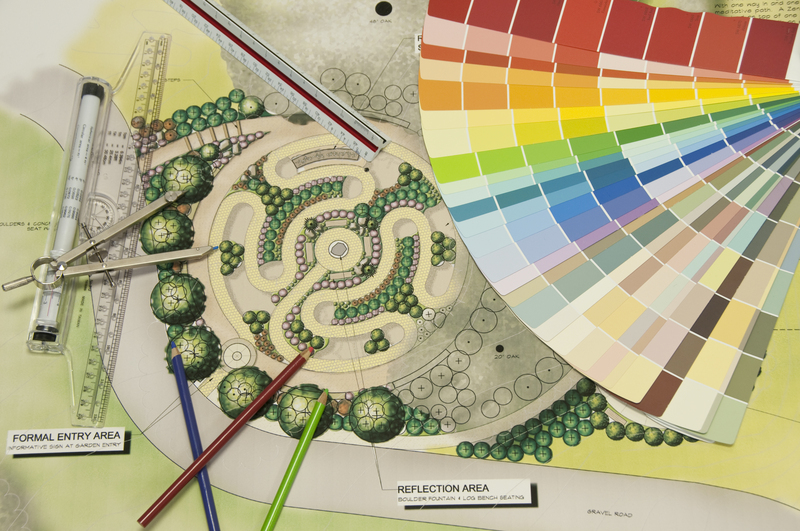Growing a Greener Future: The Climate Change Impact of Gardening
Posted on 29/08/2025
Growing a Greener Future: The Climate Change Impact of Gardening
Climate change is one of the defining challenges of our era, influencing ecosystems, economies, and the daily lives of people worldwide. As we seek sustainable solutions to reduce our carbon footprint and protect the environment, gardening emerges as a powerful ally. Not only does cultivating plants foster beauty and health, but it also plays a vital role in climate mitigation. In this comprehensive article, we delve into the climate change impact of gardening, exploring how greener spaces can bolster our fight for a cleaner, more resilient future.
Understanding Climate Change and Its Global Significance
To appreciate gardening's environmental value, it's essential to understand climate change. Human activities--chiefly the burning of fossil fuels, deforestation, and industrial agriculture--have caused greenhouse gases, such as carbon dioxide (CO2) and methane, to accumulate in the atmosphere. These gases trap heat, resulting in a warming planet and unprecedented climate shifts. Rising sea levels, prolonged droughts, and severe weather events threaten ecosystems and livelihoods worldwide.
Mitigating and adapting to these changes requires multifaceted action, and surprisingly, gardening is one of the accessible yet profound ways individuals can make a difference. The climate change effects of gardening are both direct and indirect, offering opportunities for every gardener, from beginners to experts, to contribute to environmental well-being.

The Power of Plants: How Gardening Combats Climate Change
Plants are nature's workhorses in fighting climate change. Through photosynthesis, they absorb atmospheric CO2 and store it as biomass--effectively removing it from circulation. This natural process forms the basis of gardening's positive impact on our planet.
1. Carbon Sequestration in Gardens
- Soil as a Carbon Sink: Healthy soil teems with microorganisms and organic matter, locking away carbon that would otherwise be released into the atmosphere. Practices such as composting, mulching, and minimal soil disturbance boost soil health and carbon storage.
- Trees and Shrubs for Greater Impact: Incorporating trees, large shrubs, and perennial plants into home gardens increases the amount of carbon sequestered over the years, significantly offsetting household emissions.
- Green Roofs and Urban Spaces: Urban gardening initiatives, including green roofs and community gardens, are transforming cities into climate-resilient spaces by improving air quality and capturing atmospheric carbon.
2. Mitigating the Urban Heat Island Effect
Cities are notorious for retaining heat, a phenomenon known as the urban heat island effect. Hard surfaces like concrete and asphalt absorb and re-radiate heat, making urban areas warmer than their surroundings. Gardens counteract this by:
- Providing Shade: Trees and tall plants reduce ground temperature and create comfortable microclimates.
- Evapotranspiration: Plants release moisture through their leaves, naturally cooling the surrounding air and lessening the need for energy-intensive air conditioning.
3. Supporting Biodiversity for a Robust Ecosystem
Climate change threatens biodiversity, but gardens can act as vital refuges for diverse species. By planting native species, avoiding harmful pesticides, and creating wildlife-friendly habitats, gardeners support pollinators and other creatures. Vibrant biodiversity makes ecosystems more resilient, ensuring that they can adapt and thrive as climate patterns shift.
The Climate Change Impact of Sustainable Gardening Practices
A significant aspect of gardening and climate change lies in the sustainable choices made by gardeners. Adopting eco-friendly methods not only furthers climate mitigation but also ensures the longevity and productivity of gardens.
1. Water Conservation in the Garden
- Rainwater Harvesting: Collecting rainfall for garden use reduces reliance on municipal water and helps manage stormwater runoff, which can carry pollutants to rivers and oceans.
- Mulching: A thick layer of mulch retains soil moisture, suppresses weeds, and gradually enriches the soil as it breaks down.
- Drought-Tolerant Plants: Using plants suited to the local climate requires less irrigation, saving precious water resources.
2. Natural Fertilizers and Composting
- Composting: Kitchen scraps and garden waste can be converted into rich compost, providing nutrients without the greenhouse gas emissions associated with synthetic fertilizers.
- Manure and Organic Amendments: Natural soil amendments, such as manure and leaf mold, improve soil fertility while supporting the carbon cycle.
3. Reducing Chemical Use and Emissions
- Avoid Synthetic Pesticides: Opting for organic pest control methods, like companion planting and beneficial insects, minimizes chemical runoff and greenhouse gas production.
- Eco-Friendly Tools: Choose hand tools over gasoline-powered equipment to reduce emissions and air pollution.
4. Growing Your Own Food
When individuals or communities grow fruits, vegetables, and herbs at home, they shrink the carbon footprint associated with industrial agriculture and long-distance food transport. Gardens:
- Promote Local, Seasonal Eating: Eating homegrown produce reduces demand for imported goods and the fuel required for transportation.
- Cut Packaging Waste: Garden-fresh food comes without the plastic and packaging typical of supermarket produce.
- Empower Communities: Community gardens foster food security, reduce hunger, and promote sustainable practices in urban environments.
Innovative Trends in Climate-Friendly Gardening
As our understanding of the environment deepens, gardeners worldwide are embracing creative methods to amplify their positive effects on climate action. Among these innovations:
1. Permaculture and Regenerative Agriculture
Permaculture is a design approach that mimics the natural world, integrating plants, animals, and humans in a harmonious system. It focuses on regenerative techniques such as:
- Polyculture Planting: Growing various crops together enhances soil health and reduces pest problems.
- Perennial Crops: Unlike annuals, perennials live for several years and sequester more carbon over their lifetime.
- Natural Water Systems: Ponds and swales capture rainwater, rehydrating landscapes and preventing erosion.
2. Urban Food Forests and Vertical Gardens
Cities are reimagining their green spaces with urban food forests and vertical gardening:
- Food Forests: Layered plantings of fruit trees, shrubs, herbs, and groundcover produce food and absorb CO2 while enhancing urban biodiversity.
- Vertical Gardens: Utilizing walls and fences for climbing plants maximizes greenery in small spaces, offering cooling and carbon storage benefits.
3. Smart Gardening Technologies
- Soil Sensors and Automated Irrigation: These tools optimize plant health and water efficiency, reducing resource use and preventing water waste.
- Solar-Powered Tools: Charging garden equipment with solar energy lessens reliance on fossil fuels.
- Data-Driven Plant Selection: Apps and online tools can guide gardeners to select climate-appropriate plants, boosting garden resilience.
Gardening for Climate Adaptation and Resilience
While much attention is given to mitigating climate change, gardening also prepares communities for climate adaptation. Gardens can buffer the impact of extreme weather, protect water resources, and foster community resilience.
Stormwater Management
- Rain Gardens: Shallow, planted depressions capture and filter stormwater, protecting waterways from pollution and flooding.
- Permeable Landscaping: Gravel paths, mulched beds, and other porous surfaces let water soak into the ground rather than running off into storm drains.
Heat and Drought Protection
- Shade Trees: Planting heat-tolerant trees near homes and public areas can reduce local temperatures and energy consumption.
- Resilient Plant Choices: Selecting drought-tolerant and native species supports thriving landscapes despite changing climate conditions.
Promoting Community Wellbeing
Engaging in gardening boosts not only environmental health but also mental and social wellbeing. In the face of climate uncertainties, shared green spaces become havens for recreation and connection.
- Community Gardens: These spaces foster environmental education, food security, and collective climate action.
- Habitat Restoration: Reintroducing native plants and managing invasive species increases ecosystem resilience and local biodiversity.
The Global Movement: Gardening for a Sustainable Future
Across continents, from suburban backyards to bustling metropolises, a global gardening renaissance is underway. Initiatives such as the United Nations' Decade on Ecosystem Restoration and local urban farming projects underscore the vital role of gardens and green spaces in our collective climate journey.
Whether you're tending houseplants on a windowsill, transforming lawns into meadows, or volunteering at a community garden, every action counts. Gardening is a practical and hopeful response to climate change, uniting people through stewardship of the earth.

Practical Tips: How to Make Your Garden Climate-Friendly
Ready to start growing a greener future? Here are actionable steps to maximize the climate change impact of gardening:
- Plant Trees and Perennials: Favor species that are resilient and adapted to your local climate. Trees sequester the most carbon over time.
- Compost Organic Waste: Turn kitchen scraps and yard trimmings into nutrient-rich compost, reducing landfill waste.
- Harvest Rainwater: Install a rain barrel and use mulches to conserve water.
- Create Habitat Diversity: Incorporate a variety of flowers, shrubs, and grasses to support bees, butterflies, and birds.
- Foster Community: Participate in local gardening groups, share resources, and inspire climate action in your neighborhood.
- Choose Organic Practices: Avoid synthetic fertilizers and pesticides; instead, enrich and protect your soil naturally.
- Grow Your Own Food: Even a small vegetable patch or herb garden can reduce your reliance on industrial agriculture.
By making mindful choices, you transform your green space into a tool for planetary healing while reaping the rewards of beauty, nourishment, and connection to nature.
Conclusion: Cultivating Hope in a Time of Change
The climate change effects of gardening extend well beyond individual enjoyment. Every seed sown, every tree planted, and every healthy soil amendment brings us closer to a cleaner, cooler world. In an era marked by environmental uncertainty, gardening stands as an act of optimism and responsibility--a chance for each of us to nurture the planet that sustains us.
Let us embrace the power of gardens to cool the air, protect biodiversity, and foster resilient communities. Together, our cumulative efforts shape a greener, healthier, and more hopeful future. In the gentle act of tending to the earth, we are truly growing a greener tomorrow.

